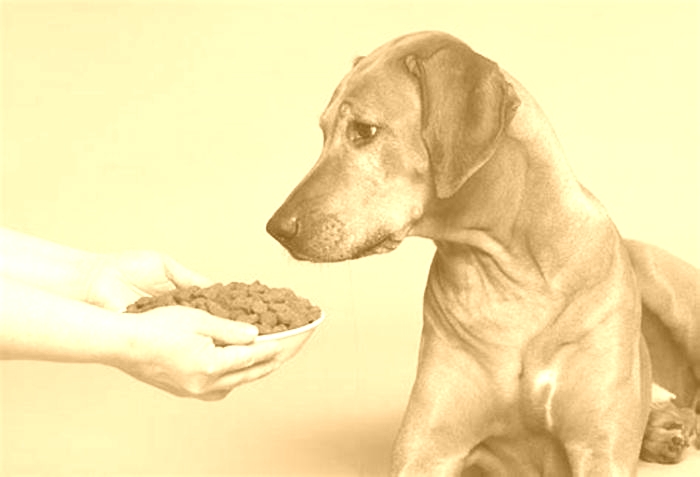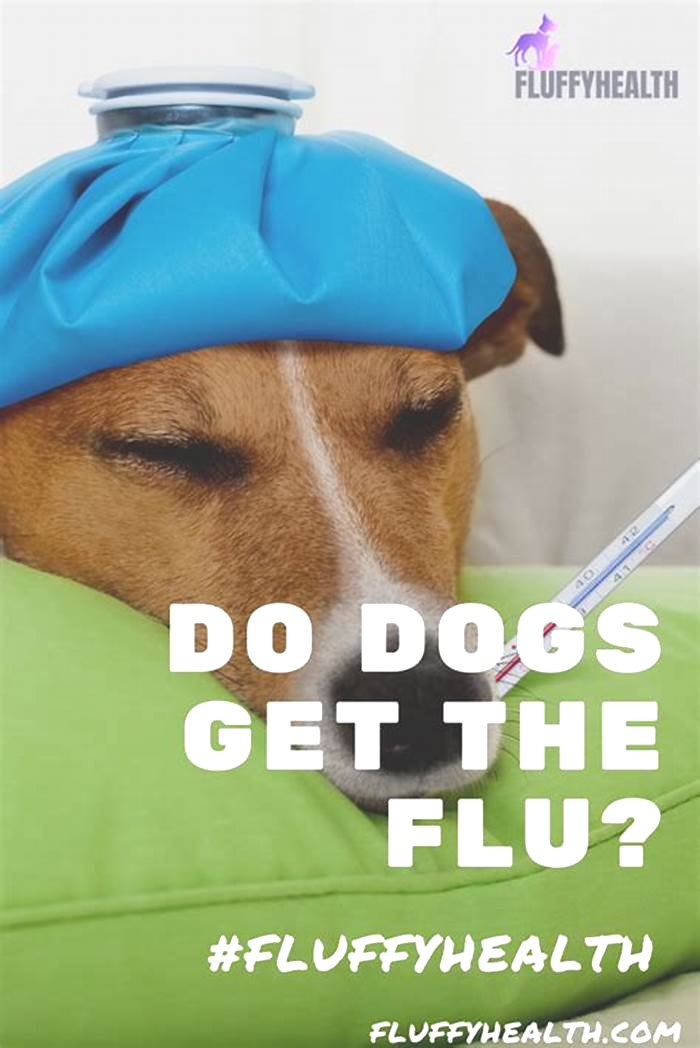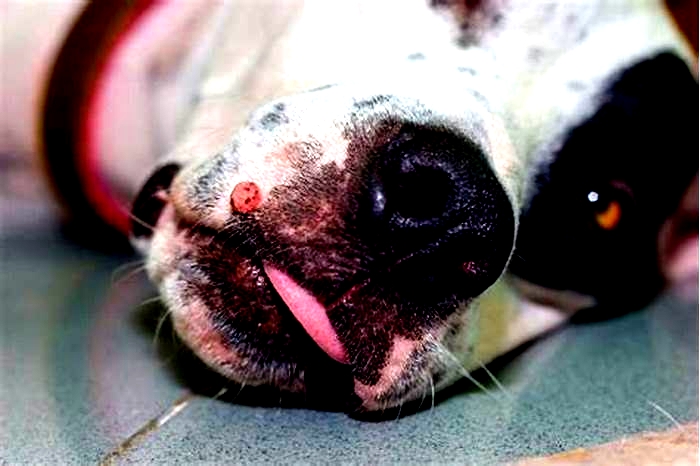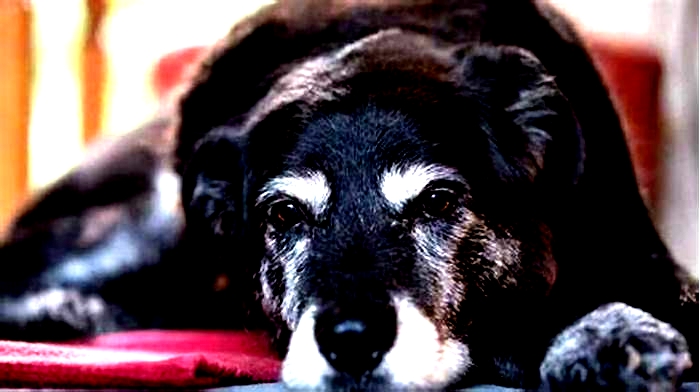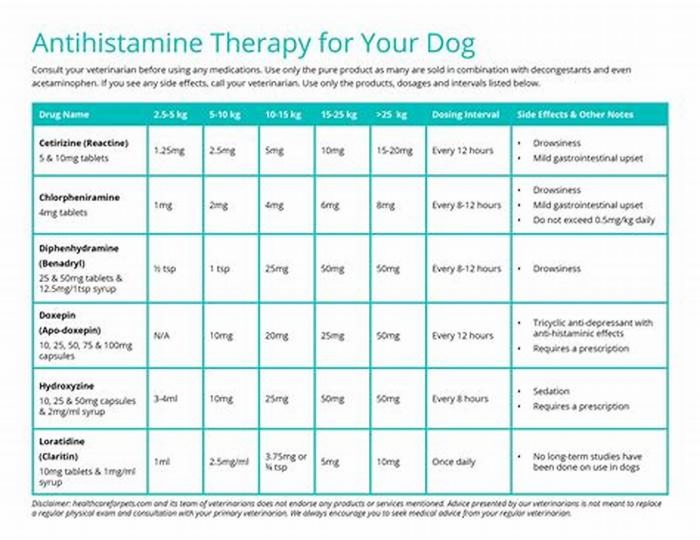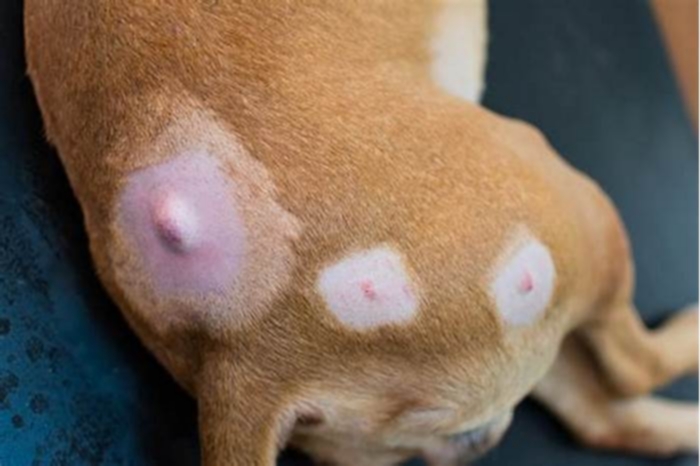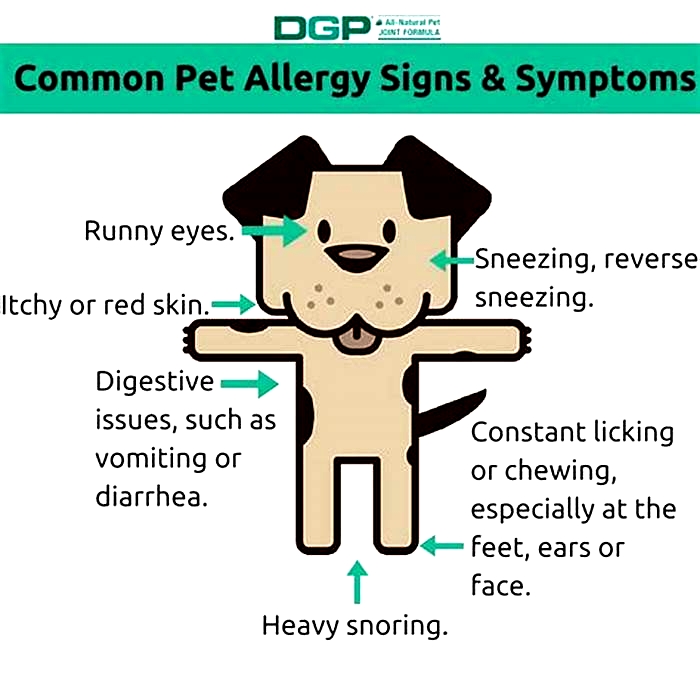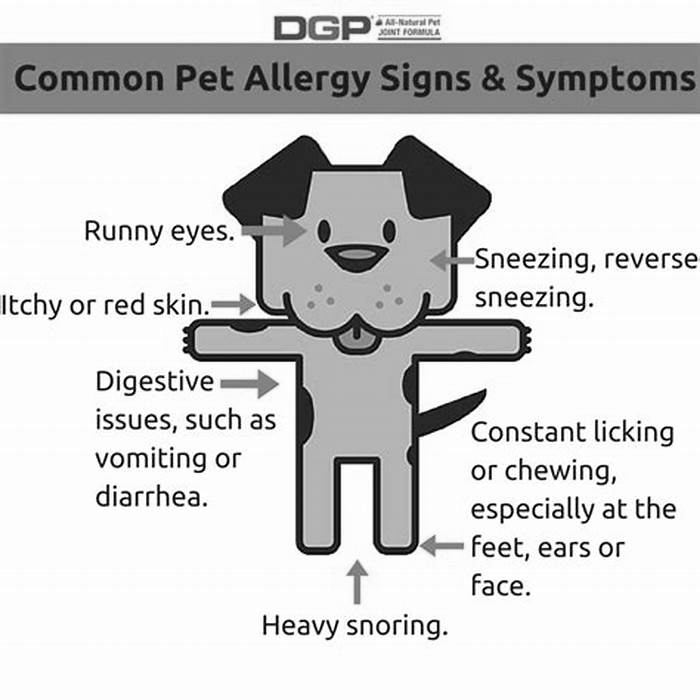Can dogs have OCD
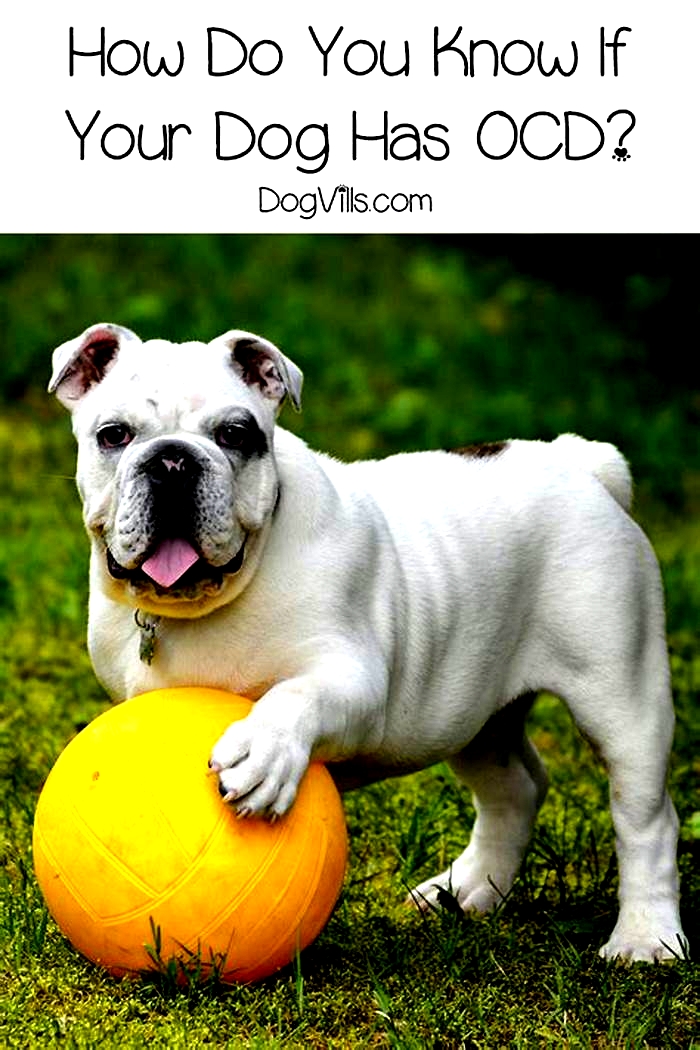
Can Dogs Have Obsessive Compulsive Disorders?
Treating Compulsive Dog Behaviors
By Lisa Radosta, DVM, DACVB
Can dogs have OCD? Not really, but they do get compulsive behaviors. What is the difference? Obsessive compulsive behaviors include obsessive thoughts, which don't apply to dogs since we cant know what they are thinking. Instead, in dogs, these disorders are called compulsive disorders. Here are some other important insights into this curious dog behavior we call compulsive disorders
What are Compulsive Disorders?
Compulsive disorders (obsessive compulsive disorder, OCD) occur in dogs, although not with great frequency. These behaviors are exaggerations of normal dog behaviors. They are exhibited for longer than expected periods of time, are repeated out of context, and in situations in which they would be considered abnormal.
Common dog behaviors which can be classified as compulsive include spinning, tail chasing, fly biting, light chasing, barking, chewing, staring into space, sucking on a toy, or sucking on a part of the body.
What Causes Compulsive Disorders in Dogs?
Compulsive disorders are caused by conflict, stress and/or frustration. With each stressful event that your dog encounters, there is a release of neurotransmitters involved with the stress response. When a dog is frustrated or stressed, he may start to perform a normal behavior such as holding a toy in his mouth in order to relieve that stress. If holding the toy in his mouth actually reduces the neurotransmitters involved with the stressful event, the dog is likely to perform that behavior again when he is stressed. For some dogs, this behavior becomes ritualized and repetitive because of the intense reward that is associated reduction of the physiologic feeling of stress or frustration.
Over time, compulsive behaviors progress and get worse. Dogs often start to perform the compulsive behavior with any stressful event, not just the original inciting situation. The behavior can take over the dogs life replacing normal sleep and feeding habits. It can cause injury to the dog as the impulse to perform the particular behavior becomes stronger and stronger. Dogs that chase their tails often end up mutilating the tail requiring amputation, while dogs that suck on themselves frequently cause skin infections.
Sometimes, what appears to be a compulsive behavior is actually an attention seeking behavior. Even behaviors which start as a frustration related behaviors can be rewarded inadvertently when owners pay attention to the dog when he performs the behavior. For example, if an owner yells No!, that is still regarded by the dog as attention and can perpetuate the behavior.
If you think that your dog exhibits a behavior for your attention, try the following tests. First, videotape your dog when you are not home to see if and when the behavior occurs in your absence. Next, try walking out of the room the next time that your dog performs the behavior. If he does not perform the behavior in your absence, your attention or presence is most probably a part of the problem.
Some dog breeds are predisposed hereditarily to certain compulsive behaviors. For example, Bull Terriers and German Shepherds are commonly seen for tail chasing. Labrador Retrievers exhibit oral compulsive behaviors such as pica, whereby the dog is driven to pick up any object and eat it. Doberman Pinschers are well known for flank sucking, whereby the dog holds and sucks on the skin of the flank for long periods. The best way to know if your dog is predisposed to a certain type of behavior is to speak to your veterinarian about your breeds genetic predisposition. Then, if possible, speak to the owner of your dogs parents to learn of their behavior.
How Do You Treat Compulsive Disorders in Dogs?
The first thing to do if you think that your dog has a compulsive disorder is to go to your veterinarian for help. Because medical conditions can cause signs similar to compulsive behaviors in dogs, it is extremely important to rule out medical diseases such as neurologic, endocrine, gastrointestinal, and orthopedic disorders. Your dog should receive a thorough physical examination as well as screening labwork before considering treatment for a compulsive disorder.
If your dog is completely healthy and is free of pain, he may have a compulsive disorder. Compulsive disorders are treated with medications to lower arousal and conflict as well as behavior modification to give the dog an alternate coping strategy outside of the compulsive behavior. Treatment is often prolonged and continues for the life of the dog. If your dog is diagnosed with compulsive disorder you can expect some ups and downs in treatment and in your dogs behavior. Often chronic cases are referred to a board certified veterinary behaviorist for treatment.
The best thing that you can do for your dog if you suspect a compulsive disorder or if your dog repeatedly displays any behavior, even if it seems harmless now, is to seek help from your veterinarian. When compulsive behaviors are treated early and quickly the prognosis is much better than if they have progressed to a chronic state.
Anxiety and Compulsive Disorders in Dogs
Obsessive Compulsive Disorder (OCD) in Dogs
Compulsive disorder is characterized by a repetitious, relatively unchanging sequence of activities or movements that has no obvious purpose or function. Although the behavior is usually derived from normal maintenance behaviors (such as grooming, eating, and walking), the repetitive behavior interferes with normal behavioral functioning. It is referred to as OCD or Obsessive-Compulsive Disorder.
The most commonly observed obsessive-compulsive behaviors are spinning, tail chasing, self-mutilation, hallucinating (fly biting), circling, fence running, hair/air biting, pica (appetite for non-food substances such as dirt, rocks or feces), pacing, staring, and vocalizing. Some dogs also show the potential for aggression.
No breed, gender or age of dog is more likely to have obsessive-compulsive disorders, although the specific type of OCD displayed may be affected by breed, such as spinning as opposed to self-mutilation. As with other anxiety disorders, onset of OCD begins early, around 12 to 24 months of age, as the dog developmentally matures (generally defined as occurring at 12 to 36 months of age in dogs). If you are observing early signs of obsessive behavior in your dog, and it is descended from a line where other dogs are affected, early intervention is critical.
Symptoms and Types
- Signs of self mutilation missing hair, raw skin, focus is commonly on the tail, forelimbs, and distal extremities
- The dogs behavior intensifies over time and cannot be interrupted even with physical restraint, increases in frequency or duration, and interferes with normal functioning
- Frequent tail chasing, especially if the tail tip is missing (however, not all dogs that tail chase will mutilate their tails)
- May be seen in young dogs, but onset is more common during social maturity; playfulness decreases with age, OCD increases
- A solitary focus may have seemed to spur the behavior (for example, chasing a mouse that the patient could not catch) - but usually no direct cause is evident
- May see self-induced injuries and lack of condition that may be associated with increased motor activity and repetitive behaviors
- Behavior worsens with time
Causes
- Illness or painful physical condition may increase a dog's anxieties and contribute to these problems
- Kenneling and confinement may be associated with spinning
- Degenerative (for example, aging and related nervous-system changes), anatomic, infectious (primarily central nervous system [CNS] viral conditions), and toxic (for example, lead poisoning) causes may lead to signs, but abnormal behavior likely is rooted in primary or secondary abnormal nervous system chemical activity
Diagnosis
Your veterinarian will perform a complete physical exam on your dog. You will need to give a thorough history of your dog's health, including a background history of symptoms, any information you have about your dog's familial line, and possible incidents that might have precipitated the behavior. Your veterinarian will order a blood chemical profile, a complete blood count, an electrolyte panel and a urinalysis in order to rule out underlying physical causes or disease.
Treatment
If all of the physical tests fail to confirm a cause for the behavior, a veterinary behaviorist may be consulted. Treatment is usually conducted on an outpatient basis, however, if your dog is showing severe self-mutilation and self-induced injury, it may need to be hospitalized. Your dog will need to be protected from the environment until the anti-anxiety medications reach effective levels, which may require days or weeks of therapy, constant monitoring, stimulation, and care. Sedation may be necessary in severe cases.
Your veterinarian will prescribe anti-anxiety medication along with a behavior modification program. If possible, videotape your dog as soon as the behavior begins. A pattern may become clear. Any itchy skin diseases should be diagnosed by your veterinarian, since itchiness and pain/discomfort are related to anxiety.
Behavior modification will be geared toward teaching the dog to relax in a variety of environmental settings, and to substitute a calm, competitive, or desired behavior for the obsessive-compulsive one. Desensitization and counter conditioning are most effective when instituted early, so it is essential to begin these techniques as soon as you become aware of compulsive behaviorisms in your dog. The training may be coupled with a verbal cue that signals the dog to execute a behavior that is competitive with the abnormal one (for example, instead of circling, the patient is taught to relax and lie down with its head and neck stretched prone on the floor when it is told, head down).
Punishment should be avoided, as it can lead to greater anxiety and may make the behavior worse, or lead to the dogs being more secretive. Confinement or excessive physical restraint should also not be used to the anxiety that is provoked. Avoid bandages, collars, braces, and crates; all serve to focus the dog more on the center of its distress and will make it feel worse. If these are needed to ensure healing, they should be used for a minimal amount of time or as your veterinarian recommends.
Living and Management
Monitor behaviors via weekly videotaping and/or written logs, with times, dates, and the behavior leading up to the obsessive behavior tracked. This will provide unbiased assessments of change and help with alterations in treatment plans. Your veterinarian will schedule biannual visits with you and your dog to obtain complete blood counts, biochemistry profile and urinalysis, to be sure that the body is healthy and not contributing to your dog's anxiety or distress. Observe for vomiting, gastrointestinal distress, and rapid breathing. If these symptoms are identified, contact your veterinarian.
Medications may take several weeks to show an effect on the target behavior - the first sign of efficacy may be changes in the duration or frequency of bouts rather than total cessation of the undesired behaviors. Setting realistic expectations for change will help you manage the outcome of behavioral and medical intervention. Relapses are common and to be expected during stressful or new situations.
Dont try to reassure your pet that it does not have to spin, chew, or perform other repetitive behaviors; this inadvertently rewards the repetitive behavior. Reward the dog only when it is not engaged in behavior and is relaxed. However, the behavior should not be entirely ignored. If left untreated, these conditions almost always progress to more serious levels.
Can Dogs Get OCD?
Have you ever wondered if dogs can get OCD (aka obsessive compulsive disorder)?
Turns out dogs cant actually be diagnosed with OCD like humans can, but a dog can still display compulsive behaviors and might even need help managing them.
Sound confusing? Itll make more sense once you read on.
Can dogs have OCD?
According to Dr. Walter Burghardt, Jr., a veterinarian at BluePearl Specialty and Emergency Pet Hospital, OCD also includes obsessive thoughts that a person has, and since well never know exactly what our dogs are thinking, we cant actually say that a dog has OCD.
We sometimes use the term OCD colloquially and medically rather freely when discussing pet behavior, Dr. Burghardt told The Dodo. This diagnosis is best reserved for humans who have the ability to verbally identify motivational states of obsession (an inability to exclude certain thoughts) and compulsion (a difficult-to-break need to engage in a particular set of behaviors).
That said, there are certainly certain behaviors in dogs that suggest that some animals are experiencing an inordinate drive to engage in a particular behavior or attend to a specific event in their environment, Dr. Burghardt said.
What this means is that dogs technically cant have OCD because they cant tell us the thought process behind their behavior but they can still display compulsive behaviors.But lets be honest, pet parents do know what their dogs are thinking, right?
Obsessive compulsive disorder in dogs symptoms
In dogs, compulsive behavior is usually seen as repetitive performances of a specific set of behaviors for a longer-than-expected period of time (or displayed completely out of context).
Compulsive behaviors can include things like:
- Tail chasing
- Pawing
- Pacing
- Licking
- Spinning
How to treat OCD in dogs
According to Dr. Burghardt, these behaviors are normally treated with medications that help reduce the motivation to do these compulsive behaviors.
You can also enrich your dog's environment to provide her with lots of fun activities. This helps to redirect repetitive behaviors when appropriate and possible.
Providing environmental enrichment and encouraging exploration and play are great ways to engage a dog's energy and problem-solving needs.
Like this puzzle game from Amazon for $14.32
Or this snuffle mat from Amazon for $44.99
This may be particularly important in those dogs with high energy levels and those that are really inquisitive, Dr. Burghardt said.If you notice your dog seems to have compulsive behaviors, reach out to your vet to see if treatment is needed.
We independently pick all the products we recommend because we love them and think you will too. If you buy a product from a link on our site, we may earn a commission.

